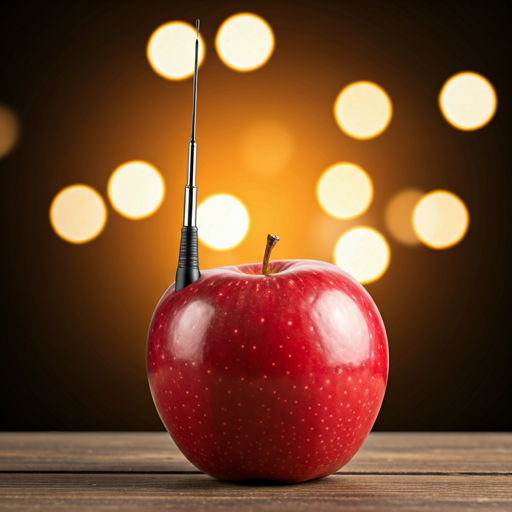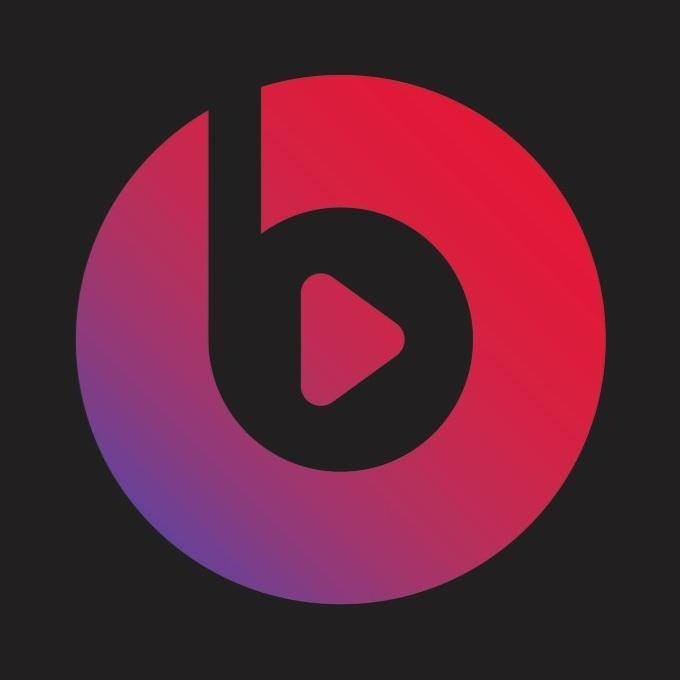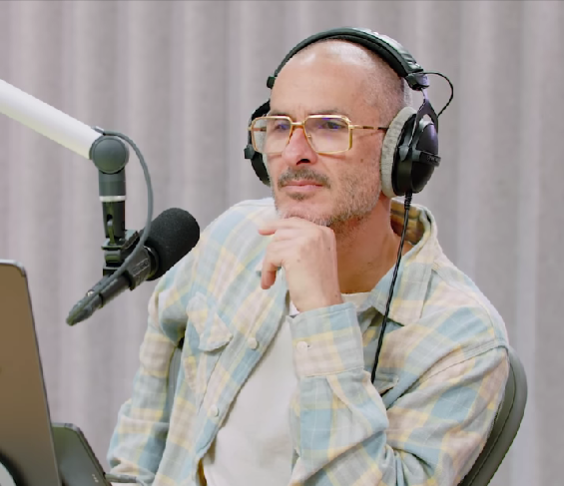
Last week, I wrote a post about how Steve Jobs reimagined broadcast radio as a music sampling service for what would become Apple’s innovative iTunes platform. Aside from its strategic brilliance, the TikTok clip featured told me that young Jobs must have loved growing up listening to radio. Given some of Apple’s key decisions revolving around the art and science of presenting and marketing music, radio must have been the foundational calculus the company utilized for many of its music concepts.
 Consider the Apple Music service known originally as Beats 1 (it’s now Apple Music 1) that BBC veteran Zane Lowe launched a decade ago. I blogged about its debut back in 2015, an ambitious and interesting initiative for a tech company like Apple trying something truly novel with its music streaming service.
Consider the Apple Music service known originally as Beats 1 (it’s now Apple Music 1) that BBC veteran Zane Lowe launched a decade ago. I blogged about its debut back in 2015, an ambitious and interesting initiative for a tech company like Apple trying something truly novel with its music streaming service.
In many ways, the debut signified an interesting connection to radio that was both respectful and insightful. To this day, you could make the case Apple understands the underlying appeal of radio more than some broadcasters do.
That Apple is doing radio is inescapable. Back when Beats 1 was unveiled, Lowe talked about how he and Apple struggled with what to call it:
“Part of the last three months has been desperately trying to come up with a new word that’s not radio. We couldn’t do it.”
Segue to an LA Times story by Mikal Wood that ran last week. Continuing this same thread, “Why Zane Lowe and Apple Music are betting on live radio in an on-demand era” provides details on three new Apple “radio stations” being unveiled, in addition to its Hits and Country channels:
- Apple Música Uno, described as a Latin music format
- Apple Music Club, focused on dance
- Apple Music Chill, described by the company as “an escape, a refuge, a sanctuary in sound” (consulted by Brian Eno)

Wood tells us these stations are all 24-hour operations with round the clock hosts. They are also formats/genres not typically heard over the commercial radio airwaves in the U.S., another way Apple is setting its radio offerings apart from what’s commonly available on the FM band. In other words, Apple is seeking to create music programming designed to reach unserved audiences.
In the process, they continue to bet on live radio to differentiate themselves from sound-alike music streaming services like Spotify and Amazon Music especially during a time when digital streaming is slowing down. It is moments like this when fickle consumers will jettison a subscription if it’s simply running up the monthly credit card bill while offering nothing unique or “must have.”
Music industry analyst, Tatiana Cirisano, from MIDiA Research says streaming services need to be famous for something:
“If you think about the past decade of streaming, it’s been characterized by a complete lack of differentiation, where all these platforms had the same interface and the same catalog. But that’s not enough to compete anymore because we’re running out of potential new subscribers.”
Thus, Spotify has doubled down on podcasts, while SiriusXM is now refocused on the car. For Apple, it’s their live radio platform. In the LA Times story, Apple stresses their “human touch” as opposed to Spotify’s AI host, DJ X. Spotify recently took the opportunity on TikTok to explain “X” is actually modeled after a real person, its music executive Xavier Jernigan:
@carterpcs Replying to @conorek @Spotify ‘s AI DJ is a REAL person #carterpcs #tech #techtok #spotify #applemusic ♬ What’s Next (Instrumental) – DJ Boomin
As the saying goes, whether it’s marketing, politics, or radio, when you have to explain, you’re playing from behind.
But for Apple, it goes well beyond the appeal of AI DJs, and it’s summed up by Lowe’s reverence for live radio and why it’s different from streaming. It starts with what happens when you walk into the on-air studio:
“Music sounds different to me in that room than it does anywhere else. I love the idea of being able to alter the energy of whatever’s going on in people’s lives in different time zones with one song.”
And that raises the question of what makes broadcast radio different in an audio environment that’s become increasingly cluttered with deep-pocketed tech companies trying to capture streaming music real estate. Lowe “gets” the power of live radio during a time when most FM operators cede too much daypart territory to voicetracking and shows beamed in from hundreds or thousands of miles away.
Our most recent AQ study, conducted last summer, discovered one in three air personalities in our sample now primarily voicetrack their shows. I have no tracking on the question because we haven’t asked it in past surveys, my suspicion is the voicetracking percentage has grown and it will continue to rise as broadcasters struggle with revenue and profitability.![]()
But to what extent are American radio stations willing to go in order to save money? What, if anything, is being lost in the process, and what impact has voicetracking had on broadcast radio’s ability to stand out as a truly special audio medium?
I know some of you reading this are thinking, “Fred, you don’t get it – the economic realities of FM radio in the 2020s demand stations voicetrack and prerecord shows with regularity. Incidentally, that was the same argument that propelled spotloads to unreasonable levels.
![]() And at what cost to the medium’s uniqueness and quality? Of course, voicetracked shows can differ enormously in quality. Some are indiscernible from live, but others are rote, mechanical, and disposable. The question is whether most of today’s overburdened programmers have the bandwidth necessary to aircheck staff voicetrackers to produce better shows.
And at what cost to the medium’s uniqueness and quality? Of course, voicetracked shows can differ enormously in quality. Some are indiscernible from live, but others are rote, mechanical, and disposable. The question is whether most of today’s overburdened programmers have the bandwidth necessary to aircheck staff voicetrackers to produce better shows.
If you think it doesn’t matter or that most listeners can’t tell, I’d like you to show me your research.
Interestingly, the LA Times story doesn’t even consider how broadcast radio (or satellite for that matter) fit in the competitive matrix. Neither is mentioned. You can blame it on reporting, but I think it’s more of a statement about FM’s radio relevance in 2025, outside its bubble of loyal and habitual listeners.
How much is radio giving up by walking away from its live component, whether it’s coverage of a weather emergency, a major news event, the death of a popular music icon, or a local sports story capturing the enthusiasm and vibe of a local market?
Many radio people I talk to view AI as an artificial version of real programming – something trying to sound real and in the moment. But ultimately, isn’t voicetracking attempting to accomplish pretty much the same thing – a way to fool listeners into thinking a personality is live and present in the studio – or the market?
This is not to say broadcasters should never voicetrack. For many pragmatic reasons, it is necessary and fiscally responsible, especially in sparse dayparts. But how far can it go and should it go? How far is too far – when the majority of a station’s content is “in the can.”
 Maybe it’s ironic but much of the conversations revolving around AI at CES were about preserving humanity. This theme repeated as we visited tech exhibits showcasing how artificial intelligence is rocking our world.
Maybe it’s ironic but much of the conversations revolving around AI at CES were about preserving humanity. This theme repeated as we visited tech exhibits showcasing how artificial intelligence is rocking our world.
As the LA Times’ Wood points out, Apple Music is focused on “bringing a ‘human touch’ to the streaming ecosystem.”
And so our conversation about the state of broadcast radio in the U.S. has to include that element, once a unique selling proposition of the medium that’s eroded during the past decade or two.
Does it even matter? Is it still part of radio’s “secret sauce?” or is it simply a holdover from the medium’s proud past?
Is “live radio” a part of broadcast radio’s unique selling proposition in 2025 or is it as meaningful to the industry as cart machines station bumper stickers?
Read the LA Times story and check Apple Music’s logic. They vigorously stand for being live, curating their music, and artist interviews – all values that have been greatly diminished by broadcast company cutbacks and progress.
Does Apple know something we don’t know?
Or that we’ve forgotten?
- “My Favorite Decade Of Music Is The __’s” - June 5, 2025
- Who’s Got It Better? Talent In Commercial Radio vs. Talent in Christian Music Radio - June 4, 2025
- It’s The Christian (Radio) Thing To Do - June 3, 2025




I have a few colleagues here working at Apple Music Country, which has been in existence for close to 5 years now. There are now “numbers” expectations. No ratings goals. No membership goals. Just go in and create a show for country music lovers. What Apple also has going for it is that it’s a $3.46 trillion company and their $$$ are made from the devices, not the programming so they have little pressure and lots of artistic freedom. No excuse – just a reality BUT we all know that definition of insanity so there IS something they know that we don’t………….or are afraid to know!
Good point about Apple being massive AND having many other revenue streams, making it less critical Apple Music hits its Q1 goal. But its amazing what a little “artistic freedom” can do for a medium. Think FM radio in the late 60s as another good example of doing great radio while the company’s not looking (or listening). Thanks, John.
Great radio (OTA, satellite, internet) is both medium and message. The OTA medium of traditional broadcast radio is more robust technically than the others, which are very Rube Goldberg. But when put to the choice between that wonderful medium with canned talent and the superior message of live, human talent guiding the musical experience via an admittedly more brittle medium, I’ll choose the latter–at least until something breaks. Who among lovers of true radio wouldn’t?
Thanks for this and I appreciate the Rube Goldberg reference even though most readers probably do not. (That’s why thee’s Google.)
A couple of things. 1) iTunes was, IMO more of a reaction to Napster than radio. It pretty much was Napster, except you had to pay $.99 for a song. This was critical for Apple, so they cover for the iPod being a piracy tool.
As for radio vs live local and not AC, Country, News/talk, Classic Rock or Urban has real appeal for me. The fact that radio didn’t even experiment with something like that on their HD channels makes it clear that voice tracking/syndication of those 5 formats is their goal and vision. Bob Pittman said as much in the most recent press release signaling more mass firings. Christian radio has demonstrated that if you put something on radio they can’t get elsewhere, they’ll come back. Too bad no one is willing to try anything new.
I firmly believe at this point that “trying anything new” on the radio would have more than an average change of succceeding – IF (a BIG IF) the quality is there. Risk aversion has made the last 25 years feel like quicksand, Bob.
Radio’s strength has always been its sense of here and now – time and place. Voice tracking gives up immediacy. Syndication gives up a sense of place, and often a sense of time as well. Why has radio lost its relevancy among so many listeners? Primarily because listeners have lost their primary place on the spreadsheets of accountants.
I get it. Revenue is down. Why? Radio companies have invested millions, if not billions, in digital while cutting investment in talent, promotions, sales, and engineering. The number of people in sales is a fraction of what it was a decade ago, and commissions have been “adjusted” because renewals “sell themselves” and programmatic buying bypasses real service to buyers.
Meanwhile, online radio suffers from technical glitches and programming neglect thanks to staff cuts that have the remaining people wearing way too many hats. Both the stream and the OTA signal need more attention paid to stopsets with awful audio, commercial repetition, and dead air. Commercial production simply needs to be better, more informative, more compelling, and more entertaining.
No matter what the delivery system, the quality needs to be better. Reinvest in radio and radio revenues will rise. Make the listeners’ experience your primary concern and you’ll more than pay for the cost of that reinvestment.
“Reinvest in radio and radio revenues will rise.” What a concept, Brian!